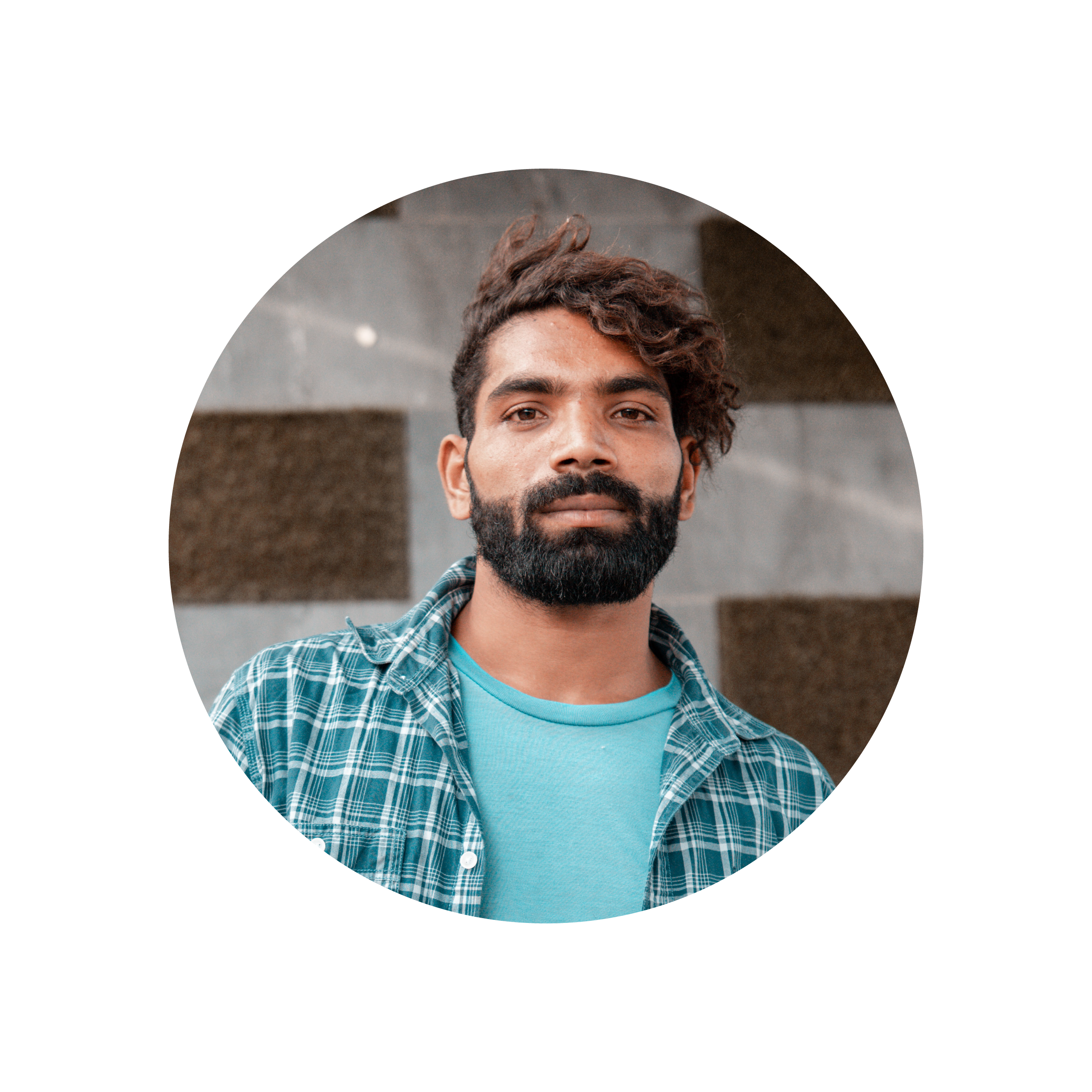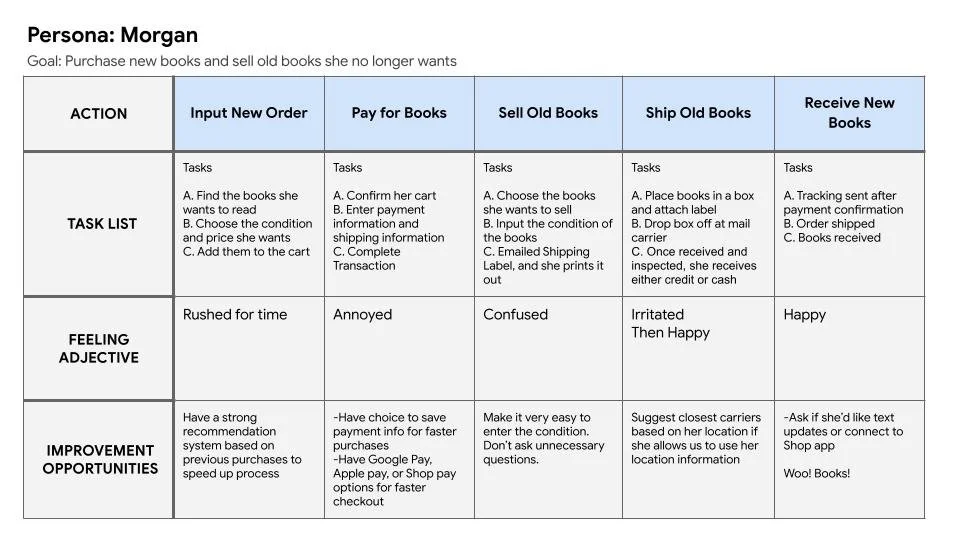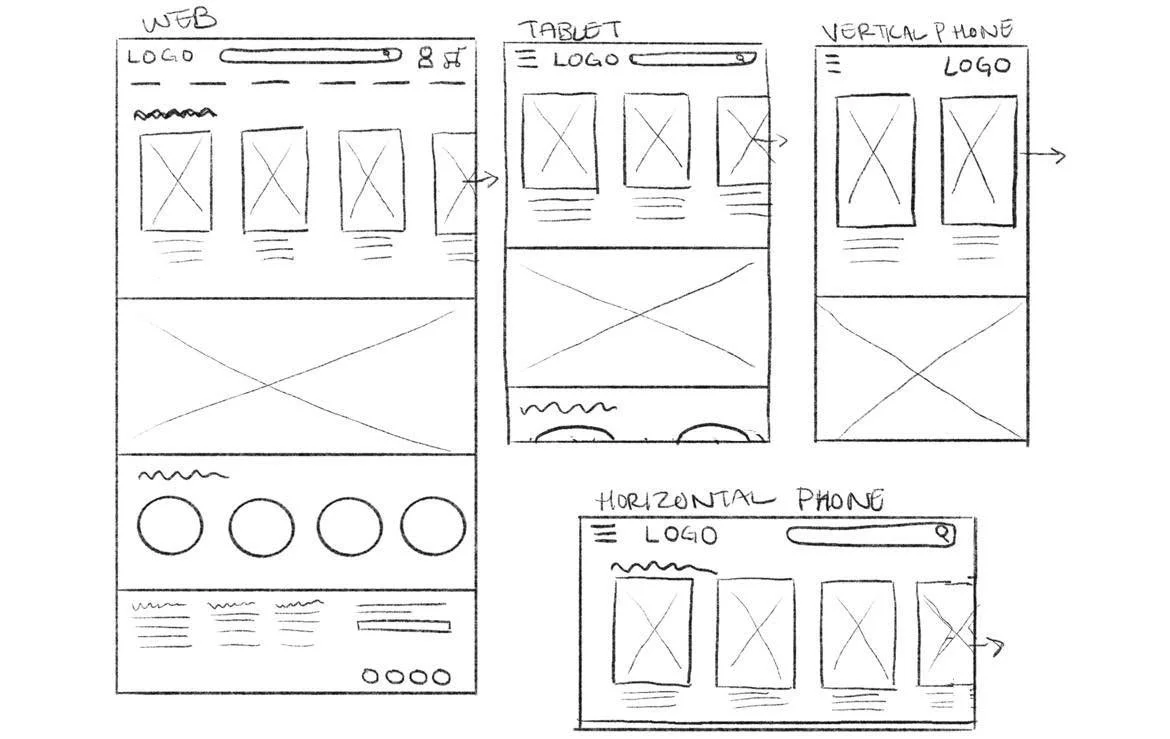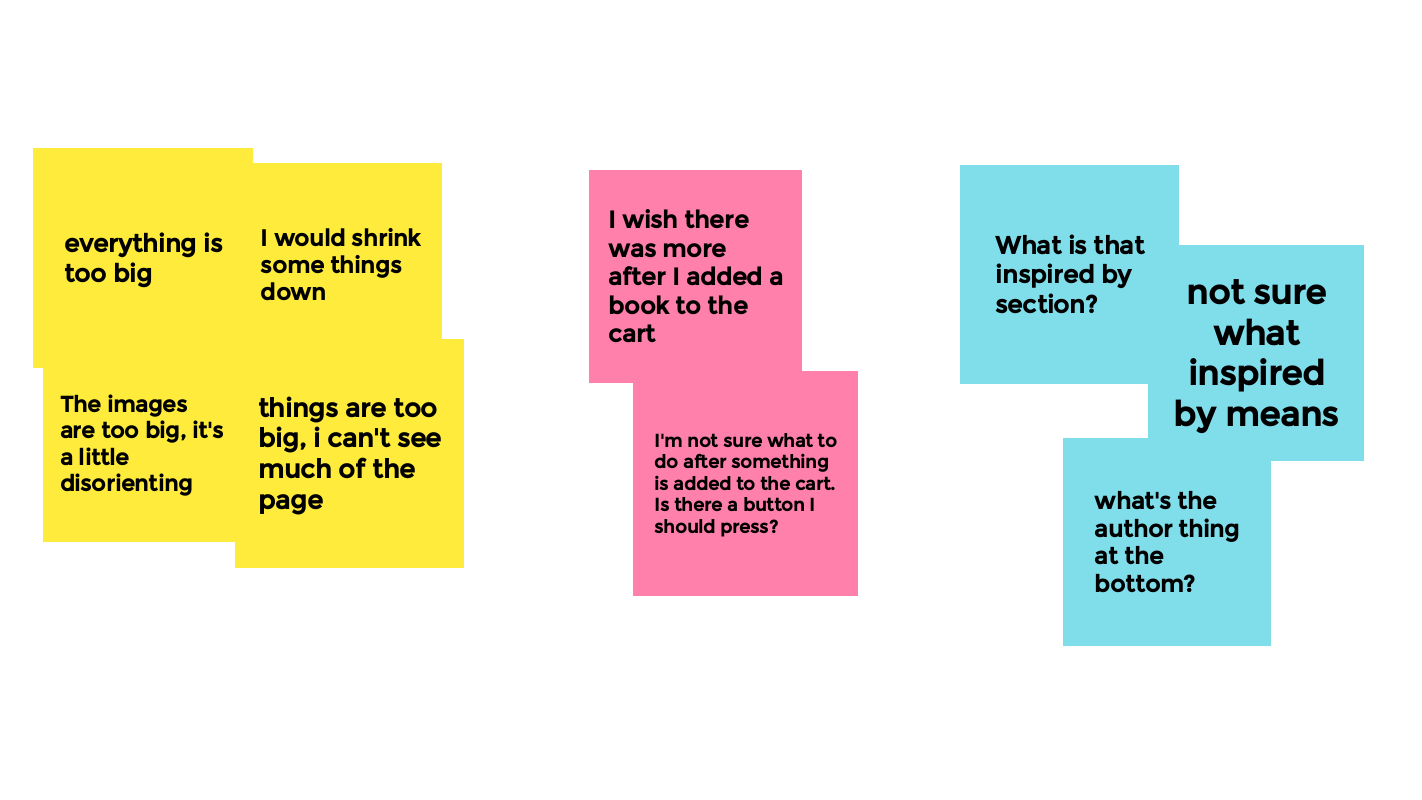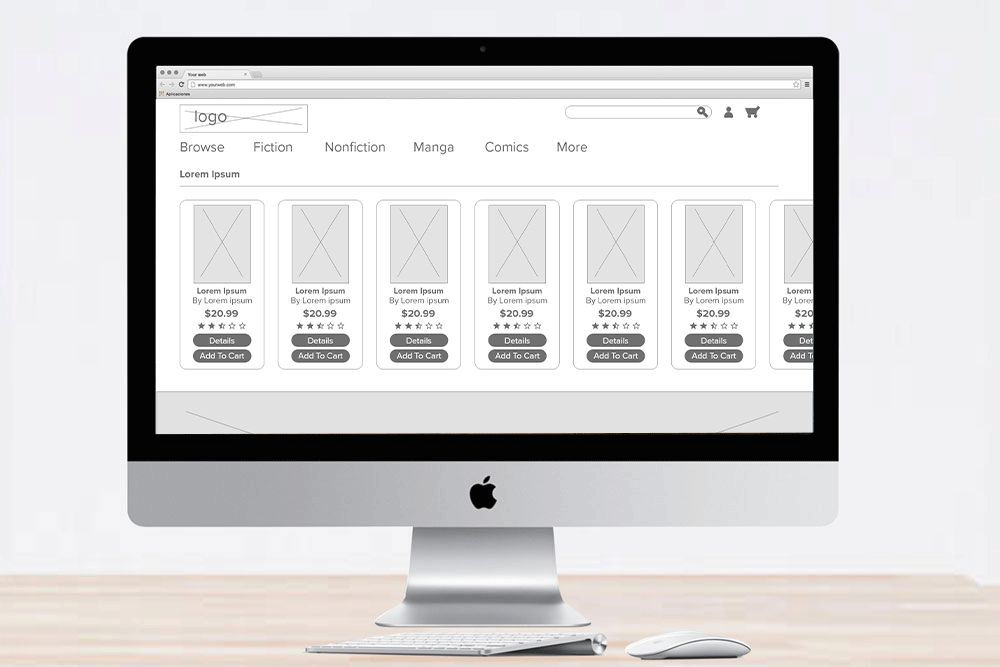
My Role: Project Lead + Research + Ideation + UX/UI Design
Project Vision
With local bookstores on the decline, it’s difficult to find affordable books and sell old books to make new space on your bookshelves.
That’s where Page Tuner comes in. Sell your used books and buy new books all in one place! Not only that, but Page Turner can integrate with local bookstores to provide e-commerce opportunities for them to expand their businesses.
Goals
1 - Create a product that brings genuine value to not only our readers but also to give opportunities for local bookstores to thrive.
2 - Build a visually appealing and accessible interface that is easy to use for anyone, no matter their physical abilities.
3 - Provide a quick and simple e-commerce experience for both buying as well as selling books.
1. Research
To start, I conducted research. Starting with trying to understand the kinds of people that would use Page Turner.
From there, I created two personas, Morgan and Donovan. I also created a user journey for how they would use the service.
Alongside that, I conducted a competitor audit of Barnes & Noble, Books-A-Million, and Amazon Books to see what they do and what I could potentially improve on.
I then created an information architecture that I would later use as a framework.
2. Wireframe
Next, I created paper wireframes of the site in order to get out as many ideas as I could. This saved me a lot of time designing, as I was able to identify good ideas from bad quickly. After that, I created new drawings for how the pages could work in a responsive environment on different devices.
Then I took these drawings into Adobe XD to create digital wireframes.
3. User Testing
An unmoderated user test was conducted on the first round of wireframes, and from there I gathered insights based on the feedback by creating an affinity diagram. I then applied the changed to a second round of digital wireframes.
4. Hi-Fi Design
With fresh critique and revised wireframes, the hi-fi design was mocked up. Building out the entire website, I made a new hi-fi prototype for further user testing.
5. User Testing, Round 2
Now that the app had been built into a high-fidelity prototype, testing it again was incredibly important. In order to keep things consistent and see if I’d resolved the issues found in the initial round of testing, the testing was run under the same parameters as before.
6. Updating and Finalizing
After testing well, the website was ready to be developed!




